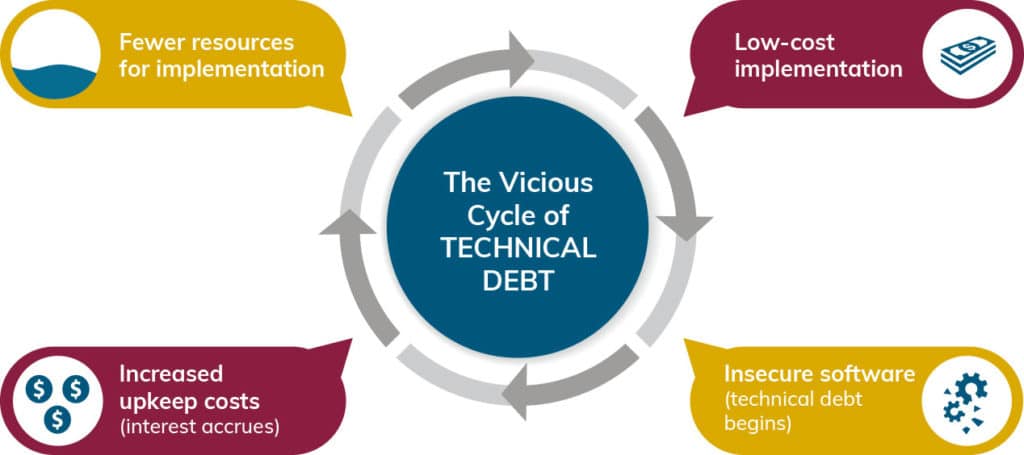Learning from the Failures: The First Generation of Lease Accounting Software
11th October 2022
When we think of technological giants like Google, Facebook, and Apple’s iPhone, we are often in awe of the dominance they were able to achieve in a relatively short amount of time. However, there is something surprising that they have in common: none of them were first. Each broke into the market with a second-generation offering, learning from their predecessors’ wins and failures.
The introduction of IFRS 16 and ASC 842 in 2019 saw a wave of lease accounting software vendors come from nowhere. Each one promised to solve the new lease accounting requirements for SMEs, corporates, and Governments alike.
After interviewing consultants and users from the across the market over a three-year period, it was found that the reality as experienced by users has seldom (if ever) lived up to the hype. Whilst compliance has been achieved in most cases, the usability of these solutions has come into question, and several common issues have been identified over and again. See if any of this sounds familiar to your current situation:
- Workflows are not user friendly and/or cannot be customised.
- I can’t bulk import data.
- It’s painful to capture lease life-cycle changes.
- Limited or no visibility of lease history.
- No flexibility in the accounting.
- Reporting is cumbersome or limited.
- Audit trails are painful to follow or don’t exist.
It becomes easier to see where these providers have gone wrong when we break them down into three distinct groups:
- Pre-existing systems modified to handle lease accounting.
- Purpose-built systems created by accountants.
- Lightweight solutions and calculators.

Avoiding the pitfalls of technical debt is critical to software success
Group 1: Pre-existing systems modified to handle lease accounting requirements.
These systems held the advantage early on as many of them, prior to becoming accounting systems, were already involved with leases, either as real estate or equipment management solutions. As a result, they already knew many of the iterations and life-cycle events a lease might go through, and they adapted their solutions to provide accounting entries.
This was attractive to their pre-existing share of the market and opened up new streams of revenue from clients looking for an established solution as opposed to a ‘risky’ new offering. However, the majority of these systems are old, hard to change, and encumbered by ‘tech-debt’. These are the systems users complain about most regarding usability. Especially when users are forced to perform unnecessary and irrelevant tasks related to the system’s original functions in order to achieve an accounting outcome. It turns out that the ability to capture a lease, and the vast amount of information that goes along it, is not enough if what you really need is a holistic easy-to-use solution.
Group 2: Purpose-built systems created by accountants.
Have you ever sat in a system demonstration and thought to yourself: “It looks like it can get the job done… but the entire process looks horrific!” Chances are you’ve seen software from this category.
These solutions were designed by accountants, for accountants, and largely focus on generating the requisite entries to achieve compliance. They commonly have an advantage over Group 1 solutions in that they are newer software and thus more likely to be capable of adding new features and variations to leases. Unfortunately, being designed around a process rather than user needs, these solutions often let customers down with their lack of basic controls and design.
As new entrants to the market, many of them have found a steep learning curve on the best practice requirements for financial instrument system design. By focusing on the accounting, they have missed the point of a lease accounting solution: portfolio management. Being able to bulk import, chop and change a portfolio view, integrate with third party software, easily record a life-cycle event, are all required features for best practice portfolio management software that accountants might not be aware of. As a result, many are still playing catch-up when it comes to interacting with SaaS-based technology and the necessary features of portfolio software, and it will be a slow burn for them to come up to speed.
Group 3: Lightweight solutions and calculators.
Generally smaller than their Group 1 and Group 2 counterparts, these solutions have far fewer bells and whistles of an enterprise level solution. They may be based on older, less reliable technology, or may not even possess SaaS technology. Often, they’re quite useful for small portfolios with little-to-no life-cycle changes or security requirements, but it doesn’t take long for them to reveal their shortcomings as the various iterations of life-cycle events occur.
Overall, the level of sophistication we are seeing from these first-generation providers should not be surprising, as the rush for functionality makes a casualty of user-friendly system design. Whilst admirable in that they allowed companies to achieve compliance, there is much to learn from their failings, and it would be naïve not to think that better solutions are destined to appear.
Introducing MyTreasur-e Lease Accounting Software

MyTreasur-e’s lease accounting software introduces the next generation of lease accounting solutions. Built upon the existing infrastructure of treasury management software, MyTreasur-e Leasing brings together all the benefits of specialist portfolio-management software and integrates them with the lease accounting life-cycle – providing a seamless and easy-to-use experience.
We didn’t appear overnight, and we distinctly differ from pre-existing systems in that MyTreasur-e was built from the ground up as an accounting system. The system did not need to be modified in order to produce the required journal entries. The features that Group 1 providers have been forced to backfill in order to stay competitive are not only already available in MyTreasur-e, but were designed early on with simplicity in mind.
Originally starting as a treasury management system, MyTreasur-e has earned a clear-cut competitive advantage in lease accounting with a deep understanding of client requirements and expectations for instrument lifecycle, accounting integration, advanced reporting, and user controls.
MyTreasur-e Leasing goes one step further: user-centric design. The focus of our leasing solution centres on simplicity coupled with flexibility. Using intuitive system design, we combine consistent screens with an Excel-like look-and-feel, allowing users to pick up MyTreasur-e quickly without the need for 10+ hours of online training in order to become capable in the software.
Overall, MyTreasur-e Leasing helps your company save time. Automated processes and reporting means companies can spend less time in the system to achieve compliance, and more time on other tasks.
Lease accounting has well and truly passed the Innovators and Early Adopters stage and is now deep into Majority segmentation territory. As a result, many clients are coming to the end of their initial three-year contracts from the first generation of providers and it’s the perfect time to see not only what alternatives are available but where costs can be saved.
At MyTreasur-e, we had an idea that the complex world of lease accounting could be made simple. Powerfully simple. Book a demonstration to see for yourself, or visit our website to find out more.
About MyTreasur-e
MyTreasur-e is a powerful yet simple to use SaaS treasury, cash management and lease accounting software. Built on solidly reliable and trusted cloud technology, MyTreasur-e facilitates team and people collaboration. The solution’s deployment across your organisation, including across multiple geographical locations, is straightforward and uncomplicated. For more information, please visit www.mytreasur-e.com

